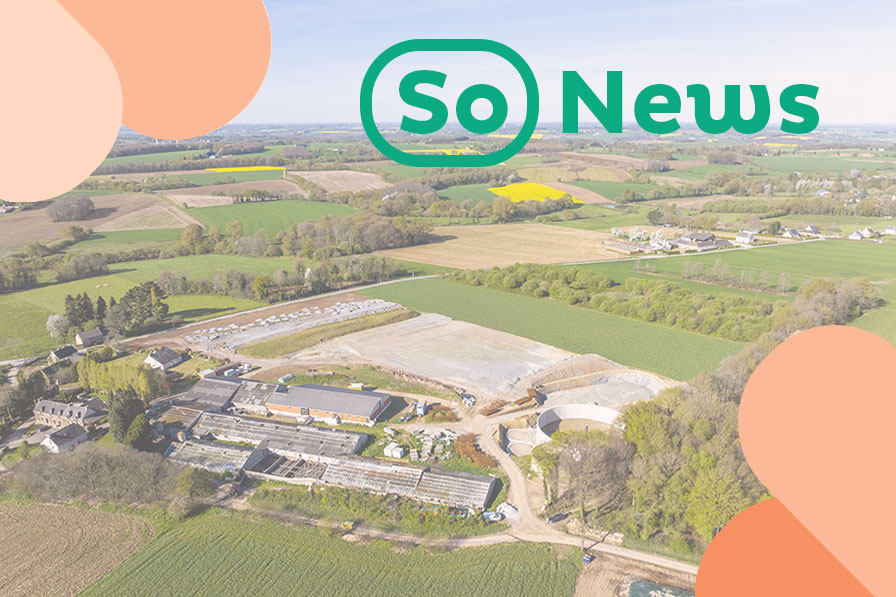Release of soNews #12 (March 2024)

Intended for all our stakeholders, soNews brings you stories relating to the energy transition and GRTgaz’s actions in this area.
Subscribe to the soTerritoires and soNews newsletters

Contents of soNews #12 – March 2024
Since 25 January, the GRTgaz Group has had a new Chief Executive Officer. An engineer with a PhD in chemistry, Sandrine Meunier is an expert in gas infrastructures and new gases. After starting her career at the Gaz de France research centre, she joined GRDF and then GRTgaz in 2013. She has held a variety of positions: Network Asset Manager in the Technical Department, Director of the Hydrogen Project, Deputy Director of the Information System Department, Director of the RICE Research Centre and Director of Operations. Her background makes her a specialist in hydrogen and gases, a key asset in her mission to bring about the third gas revolution and lead the company towards carbon neutrality. “I am convinced that our country’s future depends on regaining our energy sovereignty and accelerating the development of renewable gases and hydrogen, many of which are produced in our regions,” she says. What are her priorities in meeting these challenges? Mobilising the teams, drawing on collective intelligence and the technologies of the future, and strengthening the complementary nature of gas and electricity.
Buoyed by the success of the first edition, our Nova incubator has just finalised the list of the second class of start-ups it will be supporting this year. These start-ups, which are all working on solutions linked to the industrial, energy and ecological transition, have access to workspaces and technical and entrepreneurial support, and have the opportunity to develop their ideas in contact with researchers at our RICE research and innovation centre. And the four winners have no shortage of ideas! SeADvance innovates in predictive maintenance for electromechanical equipment. Mirega develops gas analysers for industrial and academic customers. Revcoo has invented CarbonCloud®, a patented carbon capture solution. Safehear is developing technologies to improve hearing, including for factory operators. All these advances will help GRTgaz to optimise its performance and that of its customers.
In 2021, GRTgaz set up its Hydrogen Division, convinced that H2 would play a crucial role in the energy transition. The review of the National Hydrogen Strategy, recently presented by the government, only confirms this vision. The role of transport infrastructure is recognised as essential for connecting industrial hubs to hydrogen storage sites. The text refers to 500 km of networks in the short term. This first positive step will need to be extended over time. GRTgaz’s first regional hydrogen pipeline hubs (mosaHYc, DHUNE, HYnframed, WHHYN, RHYn) alone represent almost 500 km of network by 2030. These hydrogen valleys will then need to be linked to storage facilities, and some of them will also need to be interconnected with each other or with the networks and supply sources of other European countries, in particular via the BarMar-H2Med network designed to link Portugal, Spain, France and Germany.
In January, GRTgaz began the basic engineering studies for the DHUNE project (Dunkirk Hydrogen Universal Network), the future hydrogen transport infrastructure in the Dunkirk industrial port area. This third development phase will take 18 months to analyse and clarify all aspects of the project, from the provisional 10 km route to the technical, land, administrative, environmental and industrial safety issues. The first 10 km section of the system operated by GRTgaz is expected to come on stream at the end of 2027. The region’s major industrial players, such as ArcelorMittal, are eagerly awaiting this opportunity to accelerate the decarbonisation process.
- 680 TWh of gas were transported in France in 2023, including 112 TWh to adjacent countries to ensure security of supply in Europe, according to GRTgaz’s 2023 Gas Review.
- 44 TWh of biomethane produced by 2030: that’s the target set by the draft French Energy and Climate Strategy. By that date, 15-20% of our country’s gas mix will come from methanation units.
The Greater Paris metropolitan area is aiming to become carbon neutral by 2050. Yes, but how can we wean this region of 7 million people off carbon-based energy? How can we produce enough renewable energy to meet future needs? In an exclusive podcast, Frédéric Moulin, GRTgaz’s Regional Delegate for Val-de-Seine, gives his analysis and predictions.
For two days, in the heart of Lyon’s Cité Internationale, MIX.E 2024 will put the spotlight on the energy transition for businesses. More than 4,000 visitors are expected to attend to discuss decarbonisation from every angle, including renewable gases. GRTgaz will be there!